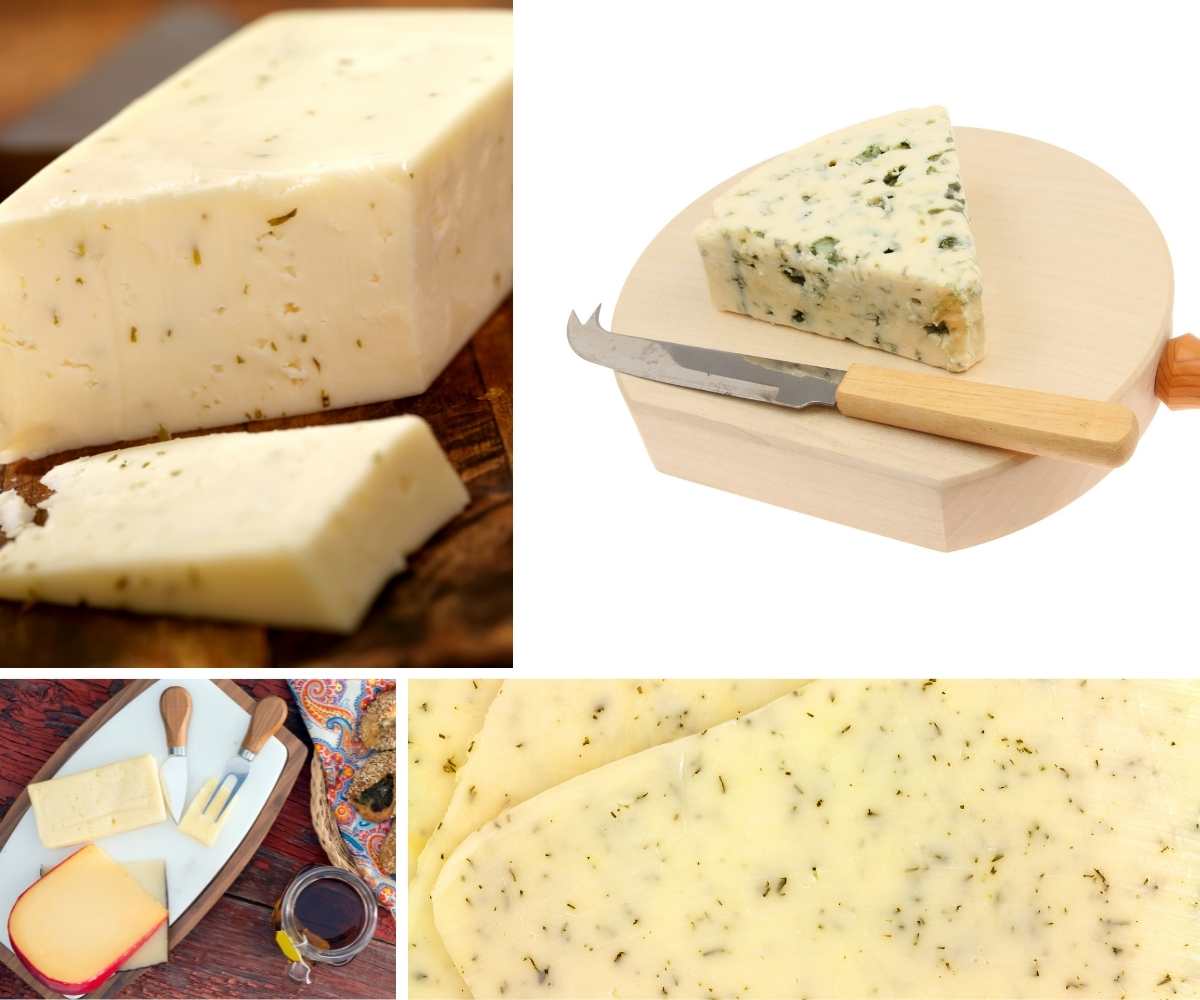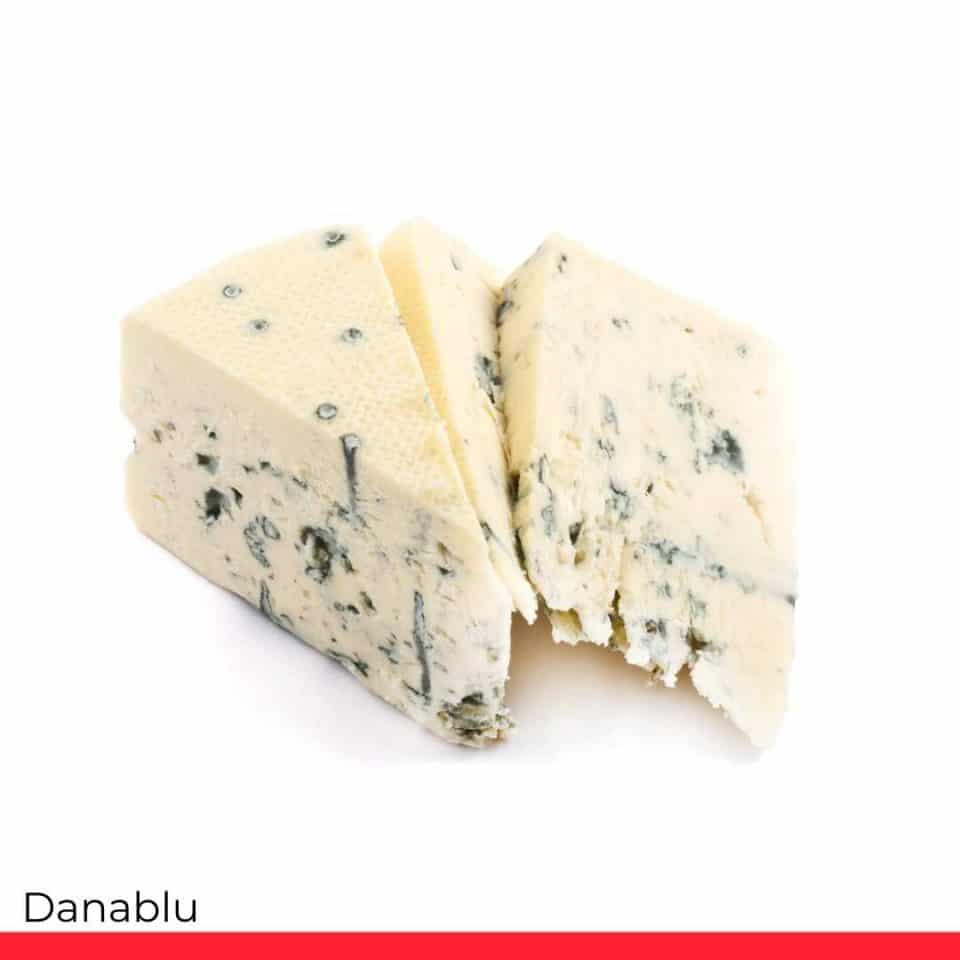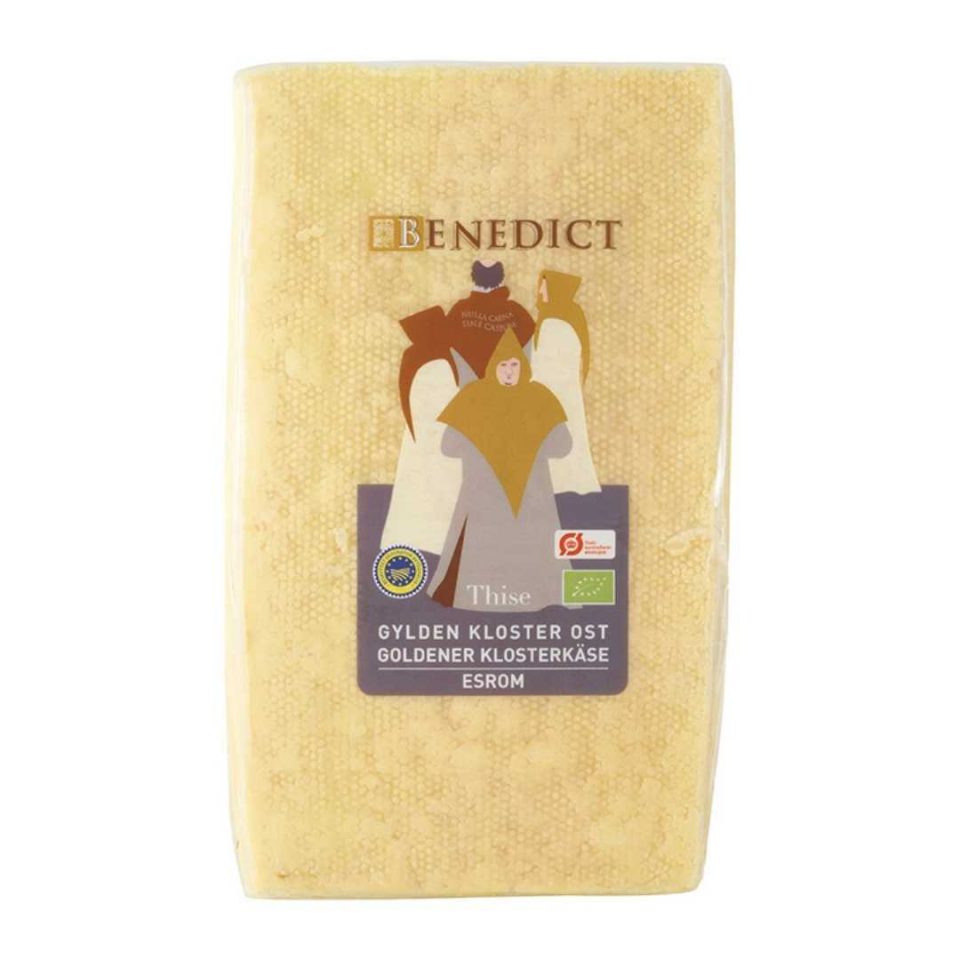10 Most Popular Danish Cheeses

The history of Danish dairy goes all the way back to before the Viking age. The relatively mild and rainy climate makes the soil in Denmark very fertile and ideal for raising cattle. Therefore, cheese has become a very integrated part of Danish food culture.
Danes like to eat cheese at any time of the day – for breakfast, lunch or dinner! They especially have a penchant for semi-soft cow’s milk cheeses, but you will also find blue cheeses and many other excellent variations on the Danish cheese table.
Four cheeses from Denmark have been awarded the European PDO-status (Protected Designation of Origin), which means that their names are protected and can only be produced in the country of origin. On this list you can read about these four cheeses, and six other cheeses that should not be missed if want a taste of Danish cheese culture.
1. Danbo

The most popular cheese in Denmark is by far danbo, which has status as the national cheese of Denmark and received PDO-status in 2017. It’s a semi-soft aged cheese made from cow’s milk, and it comes in many different versions, from mild and child-friendly (ripened for 5-8 weeks) to mature Gamle Ole (Old Ole), which is aged for 35 weeks or more. Beware, the strong smell of Gamle Ole will fill the room when you open the packaging!
The most common and popular danbos are the medium aged cheeses that are aged for 10-15 weeks. They still have a strong characteristic taste, but they’re not as overwhelmingly strong as Gamle Ole.
Another variation is danbo with cumin seeds, but this is also not for everyone!
A slice of danbo is usually enjoyed on a piece of rye or wheat bread. It also works great as a melted cheese on any warm meal.
2. Danablu

The Danish answer to French Roquefort and Italian Gorgonzola is Danablu, and it’s much more than just an attempt at imitating other famous blue cheeses. It has its very own characteristics, and it’s another of the Danish cheeses with PDO-status protected by European law.
Danish dairymen have experimented with blue cheese since before the first world war, but the Danablu as we know it today was invented by the dairyman Marius Boel in 1927, who was the first to make blue cheese from homogenized cow’s milk.
The homogenized milk makes the cheese whiter and fattier than other famous blue cheeses, and the taste is uniquely piquant, sharp, and salty.
3. Esrom

This cheese was invented by the Cistercian monks living in the Esrom Monastery in the beautiful green landscape of northern Zealand in the 12th century.
The recipe was lost during the Reformation when the monks left the monastery, but luckily it was rediscovered in the 1930s, and in 1996 Esrom was the first Danish cheese to receive the PDO-certificate.
Esrom is also called Danish Port Salut cheese. It is semi-soft, creamy, and riddled with small holes. The aroma is quite significant, but the taste is mild, buttery, and fruity. The cheese is soft but sliceable and works well on a piece of bread or as a melted cheese.
4. Havarti

Danish havarti is a wonderful soft and mild cheese that immediately melts on the tongue. The most popular version of havarti in Denmark is the 60+, the so-called cream havarti. With a semi-soft texture full of small holes and a mild and creamy taste, it’s the favorite cheese of many Danish children.
Havarti gets its name from the Havarti farm in the outskirts of Copenhagen where the Danish cheese pioneer Hanne Nielsen produced her famous cheese in the 19th century, inspired by the German Tilsiter cheeses.
Havarti is today one of the most important Danish export cheeses and received PDO-status in 2019.
5. Smoked Cheese from Funen (Rygeost)

On the Danish Island Funen they are very proud of their local delicacy, Rygeost, which literally means smoke-cheese. Rygeost is a fresh smoked cheese made with buttermilk, and is said to originate all the way back in the Viking age.
Somehow when you taste it, it’s not hard to imagine the Vikings standing by the fire flavoring their cheese with the smoke from rye straw and green nettles.
The typical way to eat the smoked cheese today is spread on rye bread garnished with a few sliced radishes and sprinkled with chives. Other common ways to serve Rygeost is with smoked fish, in a potato salad or as a dip mixed with mayonnaise.
6. Shrimp Cheese (Rejeost)

Did you know that Danes like to eat cheese spread with shrimps? Yes, that’s really a thing in Denmark (and in the rest of Scandinavia too!) The shrimp cheese is not considered a fine delicacy at all. On the contrary, it’s very popular as a spread on wheat bread or rye bread, typically for breakfast or lunch.
Shrimp cheese is made from processed cheese – which basically means (let’s just be honest) that it’s made from the by products of different cheese productions all melted together in one pot and mixed with shrimps. But there’s something seductive about the taste.
Lovers of shrimp cheese, however, often complain that there are never enough shrimps in it.
7. Mycella

Let’s get back to the gourmet table! The Danablu mentioned earlier is by far the most famous Danish blue cheese, but it has a lesser known cousin, who also deserves a mention on this list: Mycella.
Produced on the island of Bornholm and named after the mycelium mold, this has a soft texture and a mild, rich, slightly salty and fruity flavor, and actually it’s more similar to the Italian gorgonzola than to its compatriot Danablu.
8. North Sea Cheese (Vesterhavsost)

The Danish west coast is wild and rough and has a fresh, salty flavor in the air from the North Sea. Inspired by the surroundings, Danish dairymen from the famous Thise Dairy in north-west Denmark came up with a brilliant idea: to capture the salty sea breeze in a cheese.
The result was the Vesterhavsost, a cheese similar to Dutch gouda but with a harder texture and a slight touch of sweet saltiness and nuttiness. It’s matured for 26 weeks in a cave where a special ventilation system allows the western wind from the sea to impact on the ripening cheese.
The Thise Dairy is a very innovative and successful dairy in Denmark. They specialize in making products only from 100% organic milk, and with the invention of the North Sea Cheese in 2008, they have definitely invented a new classic among Danish cheeses.
9. Amber Cheese (Ravost)

Here’s another new classic from the innovative Thise Dairy. Amber Cheese is somewhere between a Danbo and a North Sea Cheese in taste and consistency – mild, but still with plenty of character – and it’s produced with local organic milk from Thyborøn on the west coast, where you can find lots of amber on the seashore.
The dairy named the cheese after Denmark’s first environmental activist, the fisherman Amber-Aage (Rav-Aage in Danish) who was a local hero fighting against chemical pollution of the sea in the 1950s. In honor of Amber-Aage, Thise Dairy decided to donate one Danish krone (0,15 USD) to environmental charities for every Amber Cheese they sell.
10. Them Crystal Cheese (Them Krystalost)

Most of the well-known Danish cheeses are semi-soft and sliceable, but this one is different. Them Crystal Cheese has the nickname of the parmesan of the north because of its hard texture and salty crystals. It has an intense umami taste with a hint of nuts and pineapple – ideal as an alternative to parmesan or simply as a tasty element on the cheeseboard at festive occasions.
The cheese comes from the Them Dairy in Jutland – one of Denmark’s oldest dairies, established in 1888 and proudly producing cheese with high quality organic milk.
In Denmark organic milk and cheese production is growing rapidly, and the standards of dairy products are very high. Together with the proud traditions and handcraft, this definitely makes Danish cheese worth tasting!
Related: Most Popular Danish Desserts
Related: Most Popular Dutch Cheeses
Related: Most Popular French Cheeses
Related: Most Popular Italian Cheeses
Related: Most Popular German Cheeses



Camilla: You left out the best Danish cheese IMHO. That is Ambassadeur which was sometimes called Danish Esrom. The smell was exquisite but it is apparently not being made any more. I would love to be able to replace it here in Northern California (it is a washed rind cheese) but no one makes anything like it, even here in California. Why don’t you research it and see if anything like it is still being made. I will come to Denmark soon and search for it.